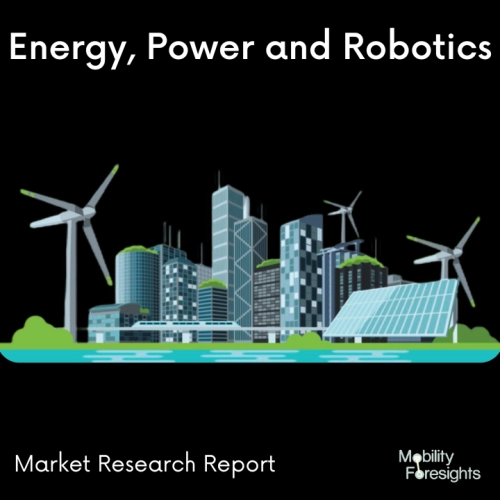
- Get in Touch with Us

Last Updated: Apr 26, 2025 | Study Period: 2023-2030
An example of a rechargeable battery is a nickel metal hydride battery (NiMH or Ni-MH). Similar to the nickel-cadmium cell's (NiCd) chemical process, the positive electrode utilizes nickel oxide hydroxide (NiOOH).
Instead of cadmium, the negative electrodes are made of an alloy that absorbs hydrogen. Despite having a substantially lower energy density than lithium-ion batteries, NiMH batteries can have capacities that are two to three times greater than those of NiCd batteries of the same size.
Since they have a slightly lower but generally compatible cell voltage and are less likely to leak, they are frequently used as an alternative to similarly shaped non-rechargeable alkaline batteries.
In a NiMH cell, the negative electrode reaction isOH + MH + H2O + M + eNiO(OH), nickel oxyhydroxide, forms on the positive electrode:Ni(OH)2 plus OH NiO(OH), water, and e
During charge, the reactions move from left to right, and during discharge, the opposite happens. An intermetallic combination called metal M makes up the negative electrode of a NiMH battery.
Although many different substances have been created for this usage, the ones that are currently in use can be divided into two kinds.
The most typical is AB5, where B is either nickel, cobalt, manganese, or aluminum and A is a rare-earth mixture of lanthanum, cerium, neodymium, and praseodymium.
AB2 compounds, where A is titanium or vanadium and B is zirconium or nickel, are the basis for some cells' higher-capacity negative electrode materials. These materials may be changed with chromium, cobalt, iron, or manganese.

The Global nickel metal hydride battery market accounted for $XX Billion in 2022 and is anticipated to reach $XX Billion by 2030, registering a CAGR of XX% from 2023 to 2030.
Numerous industries have been impacted by the COVID-19 pandemic, which has impacted sales. The industrial operations of some enterprises came to a long halt as a result of the global lockdown and severe restrictions imposed by governments.
The sales and revenue-generating rates of the nickel metal hydride battery major significant players were impacted by this. Many businesses have cut operating staff, which has had an impact on their supply chain and production, to uphold social distance rules enforced by governments.
| Sl no | Topic |
| 1 | Market Segmentation |
| 2 | Scope of the report |
| 3 | Abbreviations |
| 4 | Research Methodology |
| 5 | Executive Summary |
| 6 | Introduction |
| 7 | Insights from Industry stakeholders |
| 8 | Cost breakdown of Product by sub-components and average profit margin |
| 9 | Disruptive innovation in the Industry |
| 10 | Technology trends in the Industry |
| 11 | Consumer trends in the industry |
| 12 | Recent Production Milestones |
| 13 | Component Manufacturing in US, EU and China |
| 14 | COVID-19 impact on overall market |
| 15 | COVID-19 impact on Production of components |
| 16 | COVID-19 impact on Point of sale |
| 17 | Market Segmentation, Dynamics and Forecast by Geography, 2023-2030 |
| 18 | Market Segmentation, Dynamics and Forecast by Product Type, 2023-2030 |
| 19 | Market Segmentation, Dynamics and Forecast by Application, 2023-2030 |
| 20 | Market Segmentation, Dynamics and Forecast by End use, 2023-2030 |
| 21 | Product installation rate by OEM, 2023 |
| 22 | Incline/Decline in Average B-2-B selling price in past 5 years |
| 23 | Competition from substitute products |
| 24 | Gross margin and average profitability of suppliers |
| 25 | New product development in past 12 months |
| 26 | M&A in past 12 months |
| 27 | Growth strategy of leading players |
| 28 | Market share of vendors, 2023 |
| 29 | Company Profiles |
| 30 | Unmet needs and opportunity for new suppliers |
| 31 | Conclusion |
| 32 | Appendix |